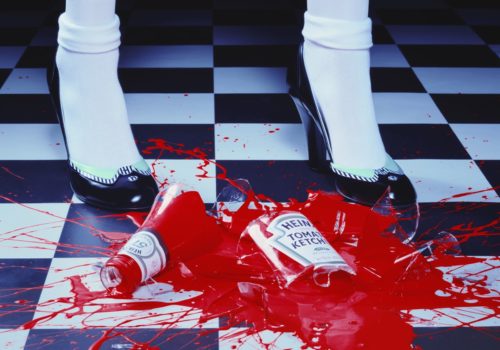We first see the explosion of colors in Miles Aldridge photographs. His modern Technicolor on acid might be the base ingredient but the recipe for Aldridge eye popping universe is way more subtle.
Nothing is really what it seems, beyond the colors are the women, expectedly beautiful but also tormented, the dreamlike scenery highly stylized and yet familiar as can be a kitchen stove or a broken bottle of ketchup.
The self described “detail obsessed” photographer could have the roots of his work in the creations of his father Alan, the iconic art director behind many of The Beatles and The Who albums covers but he claims his mother’s influence post divorce as the crafting tool for the torments of his models.
Aldridge names David Lynch and Fellini as inspirations and the cinematic quality of his images are proof if it.
As he says, “These pictures are all independent projects [but] because they’re all from one mind there’s a sense of them being stills from the same movie.”
In Aldridge’s film, like Beaton did it for My Fair Lady, we can imagine Avedon bringing the exquisite elegance, Helmut Newton the edgy direction of the actresses while Guy Bourdin takes the part of a demented director of photography. A team we can only dream of.
Still, Aldridge makes all these inspirations his own as we easily forget the past when we visit his world.
Whether we see his images in Vogue Italia, on the wall of the galleries or in his monograph “Mile Aldridge: Pictures for Photographs” (Edition 7L) , the work comes as whole and unapologetic. He is one of the few fashion photographers who bridged from the glossy pages to the rarefied air of art galleries with the same images as if, for once, everybody agreed and saw beyond the bright colors of the artist palette.
Gilles Decamps
















